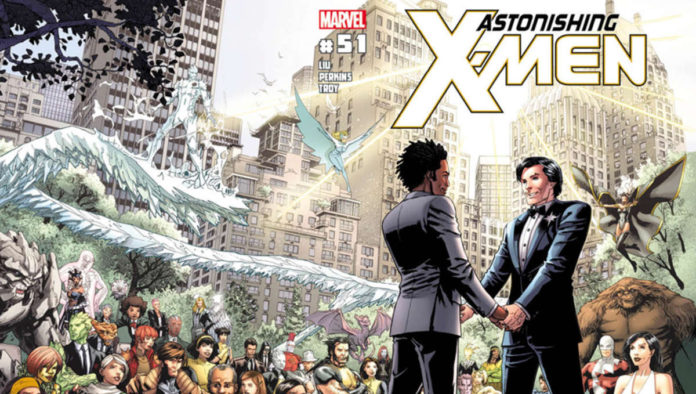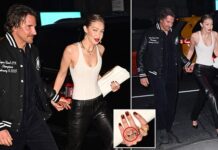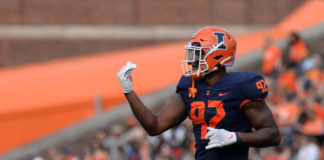
When people discuss LGBTQIA+ characters in mainstream comics, the conversation tends to revolve around relatively recent heroes who have come to the forefront, as representation along with a more diverse group of creators helped spurred change. Because let’s face it, comics was woefully late to the party in terms of accurately reflecting the diversity in sexual orientation and gender identity within our society.
Thankfully, publishers big and small have been making great strides to do better at this. You can see how comics have evolved with two new high-profile releases timed to celebrate Pride Month that feature many of those characters. DC Pride is an oversized anthology comic with a dozen stories focused on DC’s LGBTQIA+ characters such as Kate Kane, aka Batwoman, Renee Montoya, Jess Chambers, Harley Quinn, and others. At the same time, Marvel has its own special release, Marvel’s Voices: Pride, that has an all-star lineup of creators including Steve Orlando, Allen Heinberg, Jim Cheung, Vita Ayala, and Jen Hickman providing stories about Daken, Wiccan and Hulkling, Karma, and others.
I’m especially intrigued by one particular story in Marvel’s Voices: Pride by JJ Kirby which centers on the character who helped kick the doors open on a more inclusive era of comics — Northstar. It fascinates me to no end how the guy who had to be the least-popular member of Alpha Flight when the team first debuted in 1979 (in Uncanny X-Men #120) became the first acknowledged gay superhero in the Marvel universe, as well as the first hero to be in a same-sex marriage (as seen in Astonishing X-Men #51).
Please don’t hit “send” on your impassioned, “I always thought Northstar was the coolest member of Alpha Flight” tweets, because we all know it’s not true. Nobody liked him, because he was often portrayed, at least in those first few years of the original Alpha Flight title, as a bitter, selfish, and generally miserable dude. I know I didn’t like him.
But, there was always much more to Jean-Paul Beaubier than what we saw on the surface. John Byrne, who co-created Northstar along with Chris Claremont in the X-Men comics before bringing him over to the Alpha Flight series, provided the first clues about Jean-Paul’s sexual orientation. These were clues that many Alpha Flightians (is that a thing? It should be a thing) flat-out missed.
The first hints about Northstar being gay showed up in Alpha Flight #7, in a story that spotlighted Jean-Paul and his twin sister Jeanne-Marie, also known as Aurora. In that issue, Jean-Paul runs into an old friend named Raymonde Belmonde. When he introduces his sister to Raymonde, Jeanne-Marie says, “Jean-Paul has told me all about you.”
Raymonde’s reply: “He has? That surprises me a little, my dear.”
Later on in the issue, (nearly 40-year-old SPOILER ALERT!!) Raymonde is killed by the villain of the piece, one Ernest St. Ives.
In the final page of the story, Byrne writes that Raymonde had been the most important person in Jean-Paul’s life until he and Aurora were reunited. That the older gentleman had led him out of “that dark fear, into the bright clear light of self-acceptance, teaching him not to fear his mutant powers or any other thing.”
“Any other thing.”
I’ll gladly admit the subtext sailed right over my head as a 12-year-old comics reader who analyzed the angles of the punches in a Byrne-drawn action sequence with much more intensity than a page of subtle conversation. Back when this series came out, we had moved to North Miami Beach and I was frequenting a comic shop called Starship Enterprise, which I guarantee never got clearance from Paramount or Gene Roddenberry to use the name. Since Alpha Flight was one of my favorite titles, I would buy it and read it inside the shop. When I complained about how the story was boring, the guy who ran the store explained to me what Byrne was really saying about Jean-Paul and Raymonde. To say my young mind was blown would be a drastic understatement.
Byrne has discussed his portrayal of Northstar in the past on his website, Byrne Robotics. Years ago, he gave a very practical reason for why he made Northstar gay.
“There needs to be gays in comics because there are gays in real life. No other reason. Same reason, in fact, that there are Blacks in comics. Asians in comics. Women and children in comics! The population of the fictional world should represent the real world. That’s why I created Northstar — I felt the Marvel Universe needed a gay superhero (even if I would never be allowed to say it in so many words in the comics themselves), and I felt that I should create one, rather than retrofitting an existing character.”
Byrne also clarified on his website that he doesn’t consider Northstar to be a character who was retrofitted to be gay, simply because when Alpha Flight was first created, they were just supposed to be a foil for the X-Men. The backstory of the characters had not actually been worked on. Once they proved popular enough that Marvel asked Byrne to create an AF book, that’s when Byrne actually started fleshing the characters out to make them multi-dimensional.
He also noted that in those days, the early 1980s, specifically identifying a character in a Marvel Comic as being gay would never get approval from editorial, let alone the Comics Code. This is why Byrne sought to get his message across in a more discreet manner. This was years before the Internet and social media, so if fans were discussing it, those conversations were mainly siloed to whatever comic shop or small convention was happening in whatever city or town. If there is one topic I regret not delving into during my conversations with Byrne, it’s about Northstar and his approach to the character because it was truly groundbreaking and had a long-lasting impact.
There was another reference to Northstar’s sexuality just two years later, in the brilliant (and, in my opinion, underrated) X-Men and Alpha Flight two-issue series, written by Chris Claremont and expertly drawn by Paul Smith. In the second issue, Rogue asks Jean-Paul to dance with her. She had used her powers to absorb his abilities and psyche earlier in the story, and she makes note of how none of his Alpha Flight teammates, who view him as aloof and incapable of friendship, truly knows the real Jean-Paul Beaubier.
“None of y’all understand him the way ah do,” she thinks to herself.
Once again, it’s subtle, and if you weren’t paying attention or looking for the clue, you would’ve missed it. Let’s not overlook how very different this type of story threading was back in the waning days of the Bronze Age. Low-key subtle storytelling techniques weren’t exactly in vogue at the time. But Claremont took the proverbial ball from his old X-collaborator Byrne and ran with it. Which makes sense, considering how inclusive he made Professor Xavier’s mutant team during his unparalleled tenure with Marvel’s mutants.
Jean-Paul’s true “coming out” wouldn’t happen until 1992, in Alpha Flight #106, when Northstar announces he is gay during a fight with Major Mapleleaf. That issue is often pointed out as the historic moment where Marvel finally acknowledged that in a fictional universe full of heroes, the odds of at least one of them being gay were too great to keep ignoring any longer.
Only, it wasn’t. Jean-Paul Baubier’s sexuality had been an open secret for readers of Alpha Flight for nearly a decade years, provided they were paying attention. Looking back, it makes all the sense in the world that he would eventually become the first openly gay Marvel hero.
Who’s your favorite LGBTQIA+ superhero? Find me on Twitter/Instagram and let me know.
Don’t forget that Behind the Panel is a multi-platform series. Our video series is loaded with my in-depth interviews with some of the best comic book creators in the business. The Behind the Panel podcast is an audio documentary series that provides unique insight into your favorite creators and stories. Check ’em out, we think you’ll enjoy them.
The views and opinions expressed in this article are the author’s and do not necessarily reflect those of SYFY WIRE, SYFY, or NBCUniversal.








